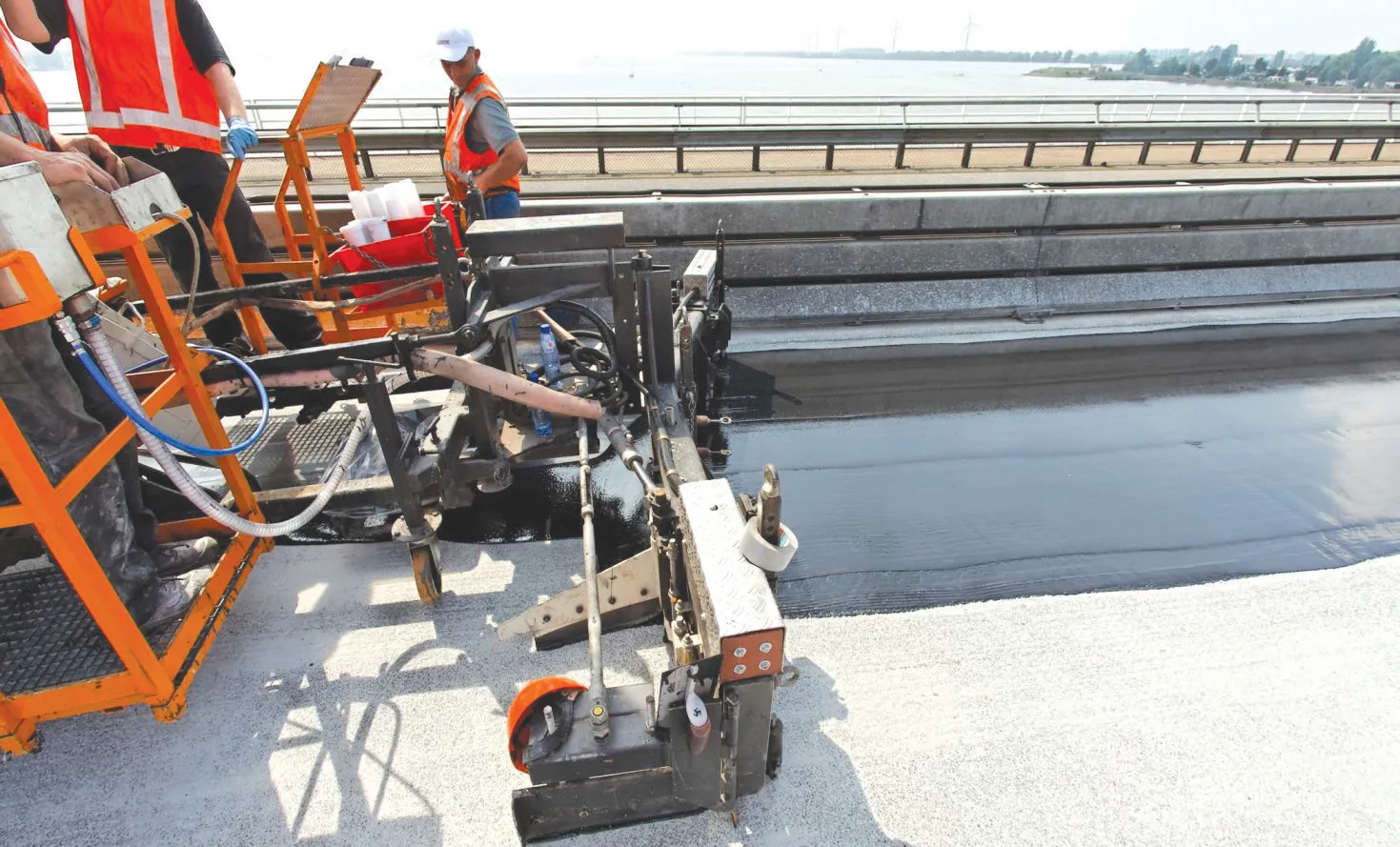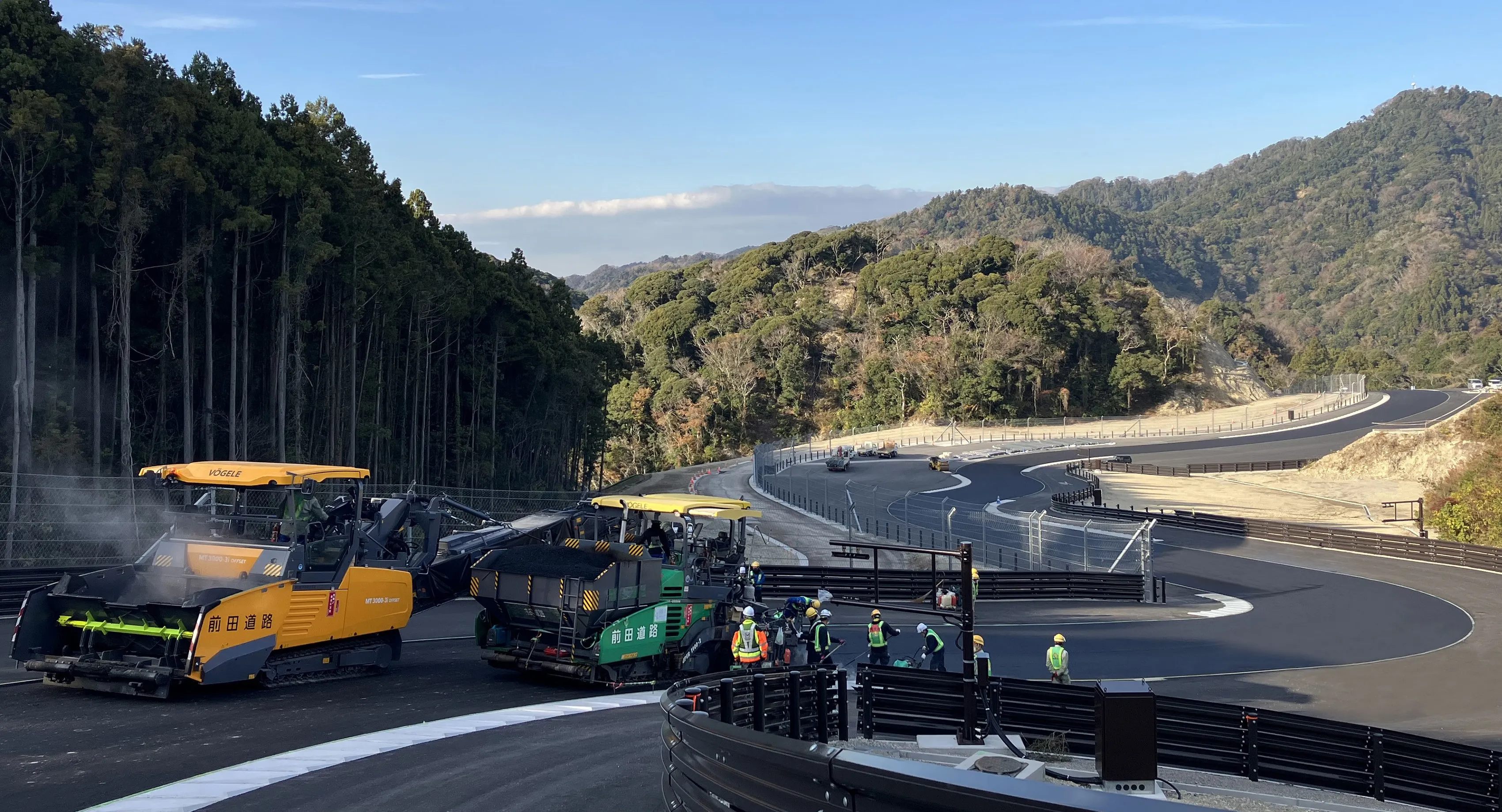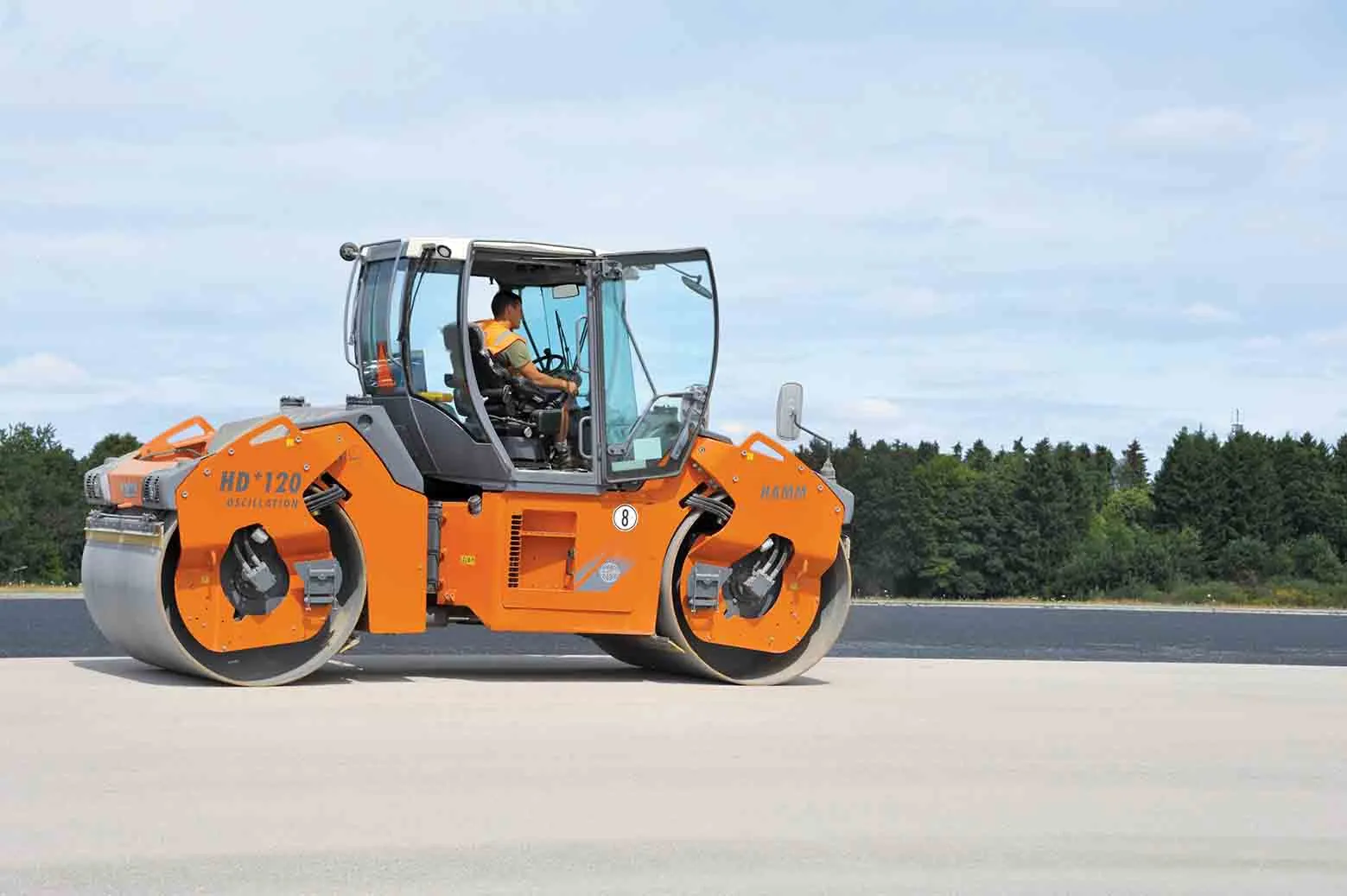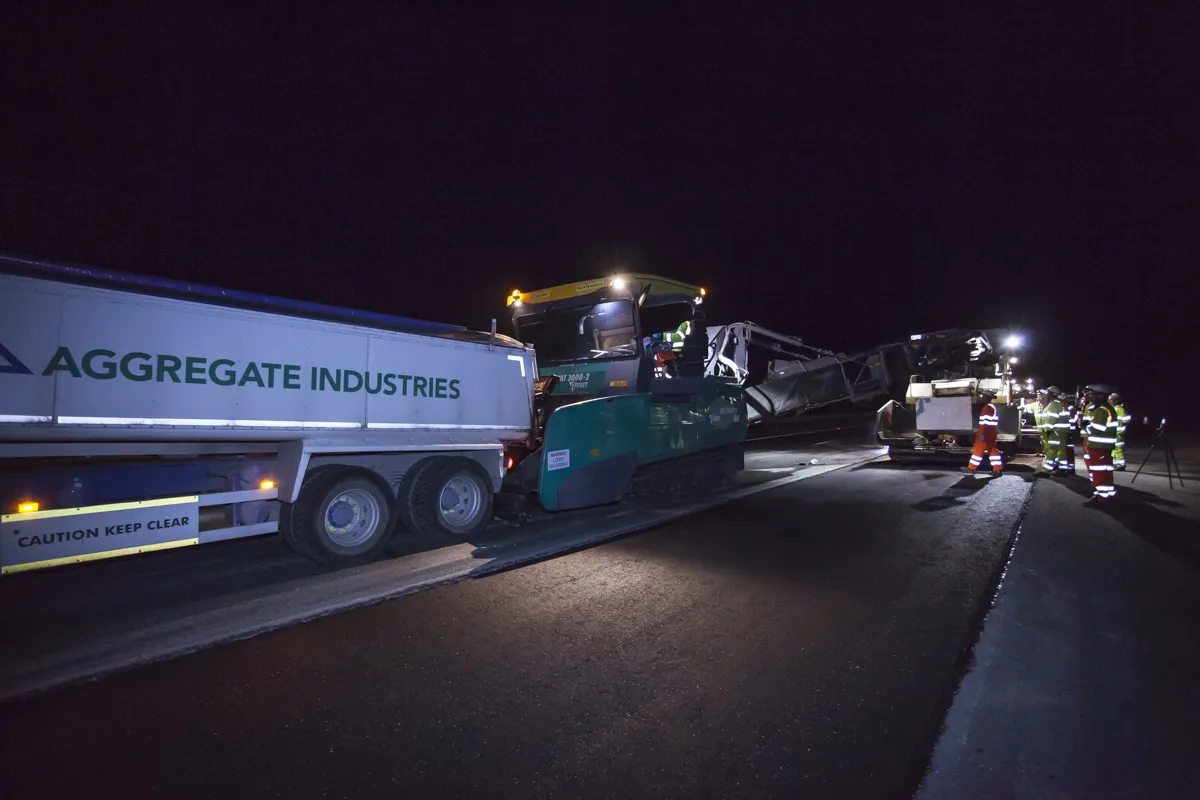An array of innovative mix designs and special processes have been introduced to the paving market in recent years. These are now being used in many site applications and are offering contractors the benefits of fast application and high surface quality while providing safe, cost-effective and hard wearing solutions with long life for clients.
February 22, 2012
Read time: 4 mins

An array of innovative mix designs and special processes have been introduced to the paving market in recent years. These are now being used in many site applications and are offering contractors the benefits of fast application and high surface quality while providing safe, cost-effective and hard wearing solutions with long life for clients.
Skid resistance is crucial to ensure safety and tests by the highway authorities in the Netherlands show that a new wearing course from2291 Bolidt can help increase traffic safety. In the Netherlands, the independent specialist KOACoNPC is carrying out extensive trials for the Dutch Ministry of Transport into the skid-resistance properties of new and older road surfaces. The tests have shown that Bolidt's Boligrip wearing courses comply with strict European requirements on skid resistance.
The trials have been carried out at several sites where Boligrip wearing courses have been used such as the Hollandse Bridge, the Moerdijk Bridge, the Bridge at Hagestein and the Caland Bridge. As accident risks double or triple in the wet, the tests were carried out using a wet road surface. The RAW test 150 used features a PIARC measurement tyre without a profile at a speed of 50km/h and with 0.5mm of water on the road surface where there was 86% braking. The safety factor for vehicle traffic is at least 0.38 for existing road surfaces while for new road surfaces with a top layer containing stone chippings, the average skid resistance between the ruts must be at least 0.52 and in the ruts at least 0.45. Following the tests KOACoNPC was able to confirm that the measured skid resistance of those road surfaces with the Boligrip product met the requirement easily.
The Boligrip product is said to provide a seamless and comparatively maintenance-free wearing course material. This can be applied quickly due to a novel wearing course machine developed by Bolidt that can lay up to 10,000m2 of material/day. According to the firm, Bolidt provides an effective alternative to asphalt, which is shrinkage-free and can cope with varying loads and weather conditions. The wearing course machine is coupled to a distribution unit and this combination allows the material application task to be carried out automatically.
Meanwhile in the UK, a special mix design has been used to improve roadway performance during a refurbishment scheme contract on the M32 motorway. Contractor3016 Cemex has used the latest generation of base and binder course material EME2 (Enrobe a Module Eleve), and met strict time constraints on a contract for Bristol City Council in Avon. The 700m resurfacing stretch had to be completed across both carriageways in just five days before the official opening of the city's €616.7 million Cabot Circus shopping centre. The contract was carried out under a lane rental contract, with the section of the motorway being closed on five consecutive nights for eight hours to allow for the removal and replacement of the worn road surface.
Each night up to 1,000tonnes of material was removed and sent for recycling. The motorway surface was then resurfaced with around 2,000tonnes of EME2 and topped with 1,000tonnes of Viatex, a high performance, thin surface asphalt developed by CEMEX that offers skid resistant properties, as well as reducing noise and spray. The EME2 material was first developed in France and is said to offer high strength and long life, featuring a high bitumen binder content combined with graded aggregate. The resulting material has a high resistance to fatigue and cracking, while being highly workable and relatively easy to lay. A novel feature of CEMEX's contract was the use of two paving machines working in echelon across both the northbound and the southbound carriages to provide a high quality surface across the motorway with no joins. This is the first contract that CEMEX Construction Services has carried out using EME2 and the firm has high hopes that combining it with CEMEX's Viatex will provide a finished road surface that is strong, durable, has a long life and is relatively quiet.
Also in the UK, high productivity has been achieved on a resurfacing project on the A229 at Blue Bell Hill in Kent in the UK. The contract was co-ordinated by2393 Ringway on behalf of Kent Highway Services and needed just 56 hours to completely reconstruct 9,000m2 of the street and to resurface almost 38,000m2. The A229 required a durable material for the new construction, as it carries heavy traffic volumes. To meet the needs of the project, Ringway Technical Centre developed an innovative multilayer surfacing for the works, ensuring long lasting durability. After planning the existing carriageway Ringway applied five layers of surfacing: The 40mm asphalt layer consisted of a 14mm Fibrovia binder course, which was treated with Flexiplast before applying a 10mm layer of Ringway's patented Gripfibre. On top of these Ringway put another 40mm layer of Fibrovia binder Course and then applied the final surface of 14mm thick material. Ringway needed to fully close the road to minimise the impact on the network users and yet ensure local businesses near the site were disrupted as little as possible.
Skid resistance is crucial to ensure safety and tests by the highway authorities in the Netherlands show that a new wearing course from
The trials have been carried out at several sites where Boligrip wearing courses have been used such as the Hollandse Bridge, the Moerdijk Bridge, the Bridge at Hagestein and the Caland Bridge. As accident risks double or triple in the wet, the tests were carried out using a wet road surface. The RAW test 150 used features a PIARC measurement tyre without a profile at a speed of 50km/h and with 0.5mm of water on the road surface where there was 86% braking. The safety factor for vehicle traffic is at least 0.38 for existing road surfaces while for new road surfaces with a top layer containing stone chippings, the average skid resistance between the ruts must be at least 0.52 and in the ruts at least 0.45. Following the tests KOACoNPC was able to confirm that the measured skid resistance of those road surfaces with the Boligrip product met the requirement easily.
The Boligrip product is said to provide a seamless and comparatively maintenance-free wearing course material. This can be applied quickly due to a novel wearing course machine developed by Bolidt that can lay up to 10,000m2 of material/day. According to the firm, Bolidt provides an effective alternative to asphalt, which is shrinkage-free and can cope with varying loads and weather conditions. The wearing course machine is coupled to a distribution unit and this combination allows the material application task to be carried out automatically.
Meanwhile in the UK, a special mix design has been used to improve roadway performance during a refurbishment scheme contract on the M32 motorway. Contractor
Each night up to 1,000tonnes of material was removed and sent for recycling. The motorway surface was then resurfaced with around 2,000tonnes of EME2 and topped with 1,000tonnes of Viatex, a high performance, thin surface asphalt developed by CEMEX that offers skid resistant properties, as well as reducing noise and spray. The EME2 material was first developed in France and is said to offer high strength and long life, featuring a high bitumen binder content combined with graded aggregate. The resulting material has a high resistance to fatigue and cracking, while being highly workable and relatively easy to lay. A novel feature of CEMEX's contract was the use of two paving machines working in echelon across both the northbound and the southbound carriages to provide a high quality surface across the motorway with no joins. This is the first contract that CEMEX Construction Services has carried out using EME2 and the firm has high hopes that combining it with CEMEX's Viatex will provide a finished road surface that is strong, durable, has a long life and is relatively quiet.
Also in the UK, high productivity has been achieved on a resurfacing project on the A229 at Blue Bell Hill in Kent in the UK. The contract was co-ordinated by









